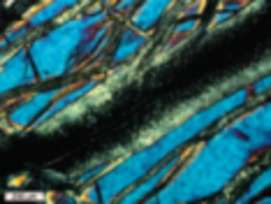Rheology and Tectonic Significance of Serpentinite
Serpentinites occur in many active geologic settings and control the rheology of the lithosphere where aqueous fluids interact with ultramafic rocks. The crystal structure of serpentine-group minerals results in diagnostic physical properties that are important for interpreting a wide range of geophysical data and impart unique rheological behaviors. Serpentinites play an important role during continental rifting and oceanic spreading, in strain localization along lithospheric strike-slip faults, and in subduction zone processes. The rheology of serpentine is key for understanding the nucleation and propagation of earthquakes, and the relative weakness of serpentinite can significantly affect geodynamic processes at tectonic plate boundaries.
Rheology and Tectonic Significance of Serpentinite Read More »


